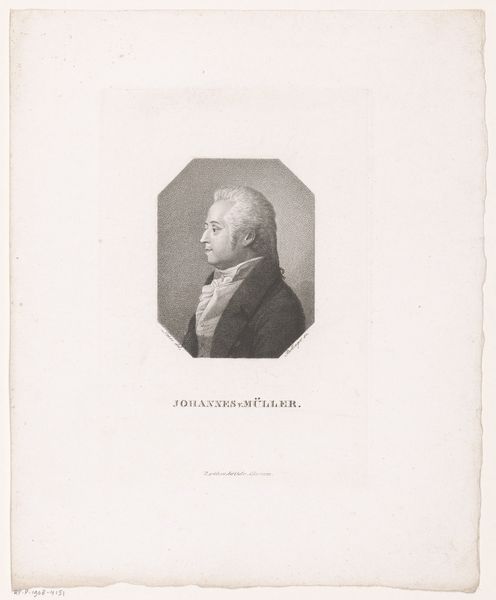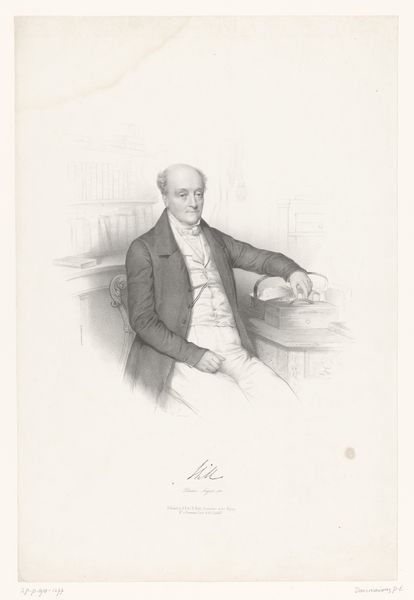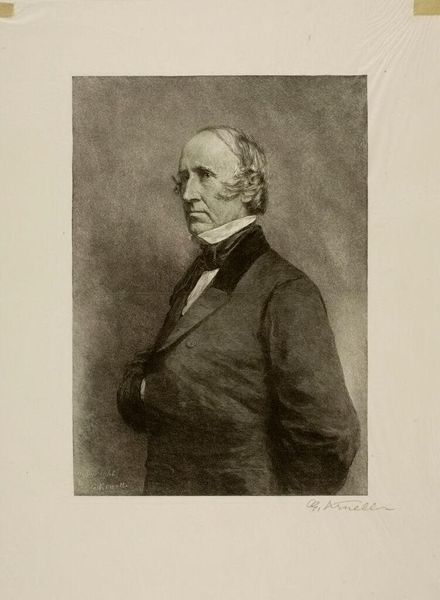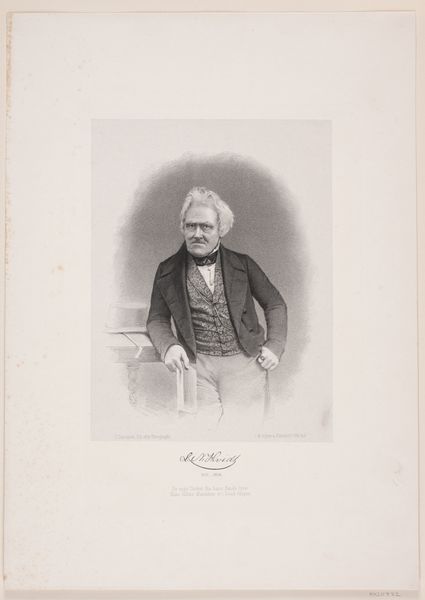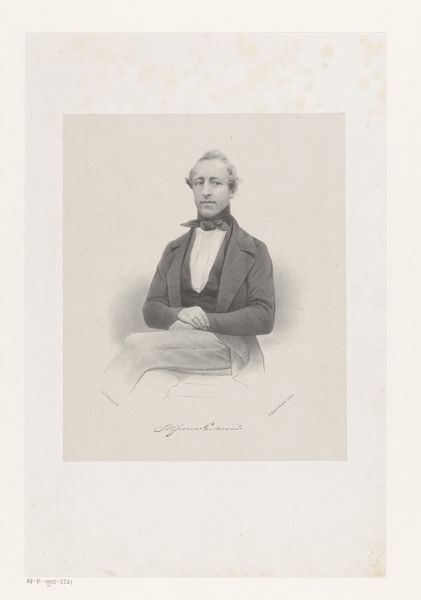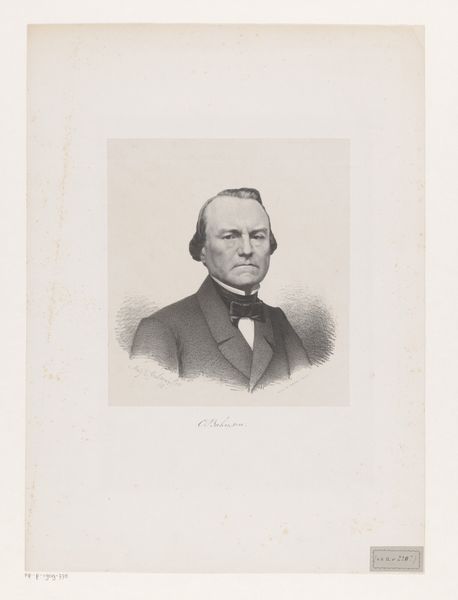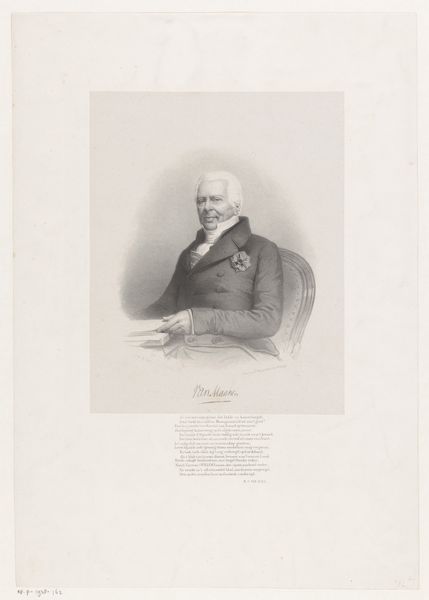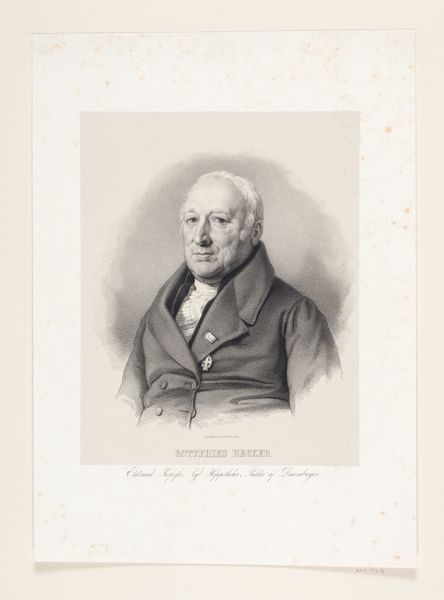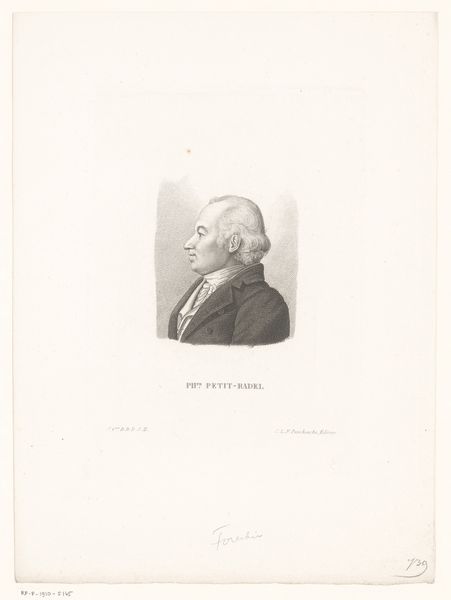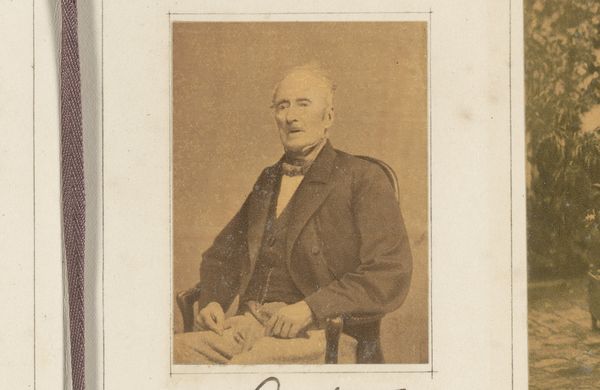
lithograph, print
#
portrait
#
lithograph
# print
#
pencil drawing
#
realism
Dimensions: height 543 mm, width 385 mm
Copyright: Rijks Museum: Open Domain
Editor: This is "Portret van de toxicoloog en chemicus Mathieu Orfila," a lithograph from 1852 by Marie-Alexandre Alophe. The detail is amazing, but there's something quite austere about the image... a formal detachment. What do you see in this piece? Curator: It's crucial to view this portrait through the lens of 19th-century scientific authority and its relationship to power. Orfila, a toxicologist, occupied a vital yet controversial position. Toxicology, after all, could be used as much for justice as for oppression. How might Orfila's work intersect with narratives of class, gender, and social control during this period? Editor: That's a good point. It feels like there's a tension between the seemingly objective portrayal of the scientist and the potentially subjective consequences of his work. Curator: Exactly! The lithograph itself, as a medium, allows for reproducibility and wide dissemination of this image of authority. How does the formal attire contribute to a perception of expertise and trustworthiness in the burgeoning field of forensic science? Editor: The books in the background also suggest a wealth of knowledge. So, this image is about carefully constructing a persona? Curator: Precisely. Consider the ways in which marginalized groups – women accused of poisoning, for instance, or the working class exposed to industrial toxins – might have experienced the power represented by Orfila. Can we, as viewers, adopt a more critical gaze toward this seemingly objective portrait? Editor: This has definitely changed my perspective on the artwork! It's no longer just an austere portrait, but a representation of complex power dynamics. Curator: I think understanding the social context is so important for appreciating any art piece and its role in history.
Comments
No comments
Be the first to comment and join the conversation on the ultimate creative platform.


